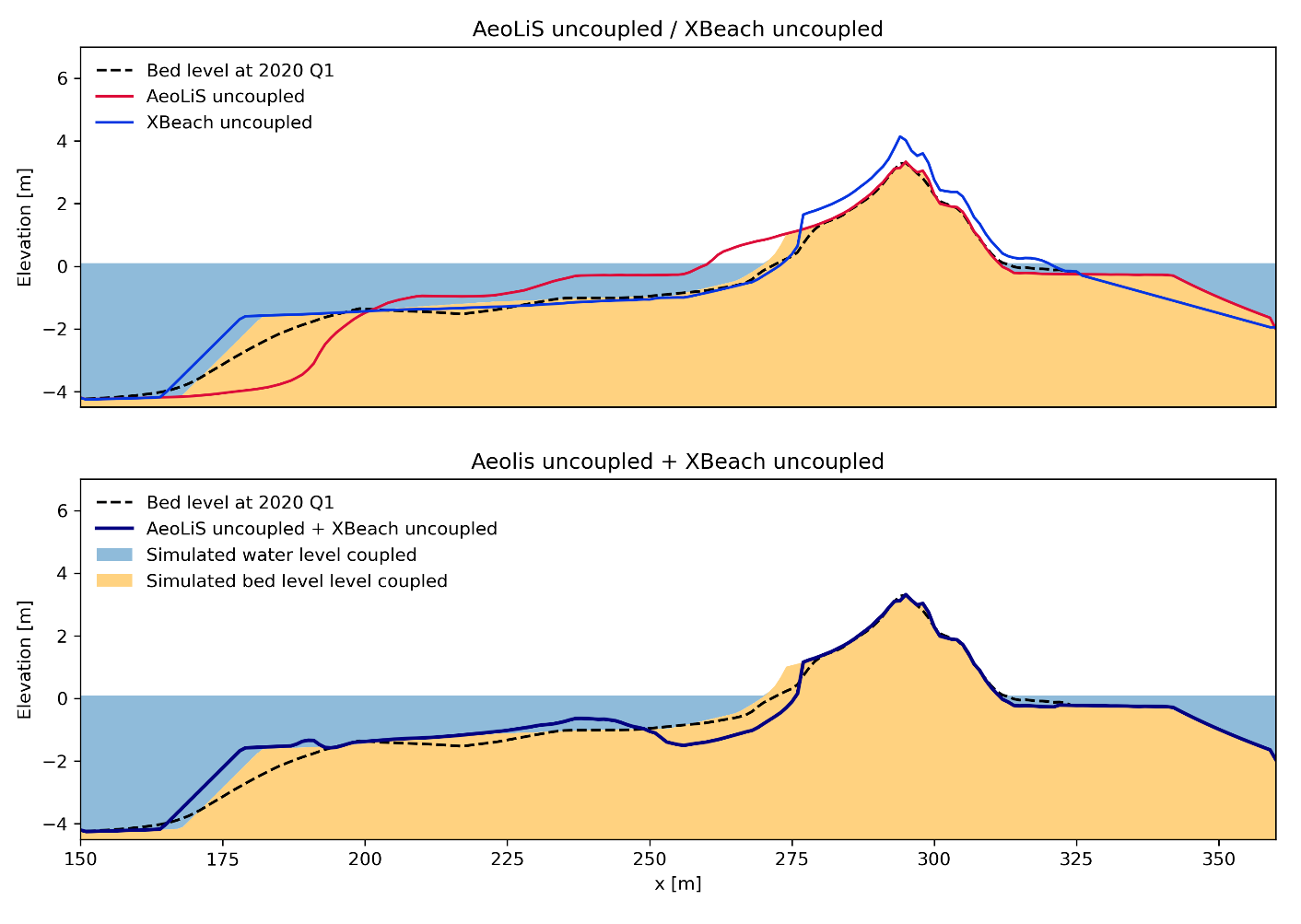B. van Westen1,2*, T. Leijnse2, A.P. Luijendijk1,2, M.A. de Schipper1, S. de Vries1, N. Cohn3
1 Delft University of Technology
2 Deltares
3 U.S. Army Engineer Research and Development Center
*corresponding author:
Introduction
The development of coastal systems is the result of interacting marine, aeolian and ecological processes. The coastal zones in which these processes are active are often studied and modelled independently, although feedbacks between processes can be critical for coastal development. Coupled models that cross the land-sea division can increase our knowledge on complex morphodynamic interactions, and therefore have the potential to improve predictions of morphological and ecological development at the foreshore, beach and dunes.
Methods
In this work, we introduce the initial developments of a generic framework for coastal model coupling, which is inspired on the WindSurf framework (Cohn et al. 2019). Earlier frameworks focused on coupling specific numerical models, limiting the number of included processes and therefore application range. We aim to develop a flexible, user-oriented framework, that allows for the coupling of a wider variety of process-based models to expand the usability. The coupled models run in parallel using the BMI (Basic Model Interface), which allows for integration of models written in different programming languages. Coupling between different grids and numerical schemes can introduce additional challenges.
Results
The basic operations and benefits of a coupled modelling approach are shown with a demonstration case. Examples of included processes are hydrodynamic erosion, supply-limited aeolian transport and sediment sorting. During future development, we aim to make to model capable of robust simulations of morphologic evolution at time scales of storms, seasons and decades through describing interactions of the aeolian, marine, and ecological parts of the coastal system. This is vital for providing better designs of coastal infrastructure and management strategies considering future challenges for coastal communities.

Figure 1: Comparing morphological development after 2 years (dry and wet) at the Marker Wadden between 1) the superposition of two stand-alone models (blue line), 2) a coupled model simulation (yellow patch) and 3) the observed bed level (black dotted line).
References
Cohn, N., Hoonhout, B. M., Goldstein, E. B., De Vries, S., Moore, L. J., Durán Vinent, O., & Ruggiero, P. (2019). Exploring marine and aeolian controls on coastal foredune growth using a coupled numerical model. Journal of Marine Science and Engineering, 7(1), 13.
I. Surname1*, F.N. Another-Surname2 , Y. Next-Surname2
1 University Name, Country; 2 Organization Name, Country
* Corresponding author: mail.name@organization.org


